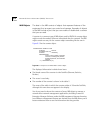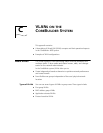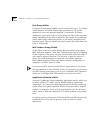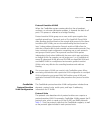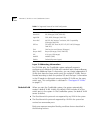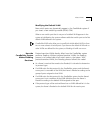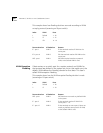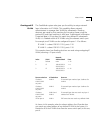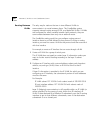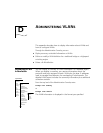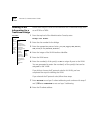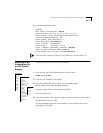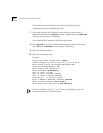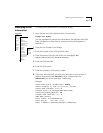
C-8 APPENDIX C: VLANS ON THE COREBUILDER SYSTEM
Routing Between
VLANs
The only way for stations that are in two different VLANs to
communicate is to route between them. The CoreBuilder system
supports internal routing among IP, IPX, and AppleTalk VLANs. If VLANs
are configured for other routable network layer protocols, they can
communicate between them only via an external router.
The CoreBuilder routing model lets you configure routing protocol
interfaces based on a VLAN defined for that protocol. To assign a routing
interface, you must first create a VLAN for that protocol and then associate it
with that interface.
For example, to create an IP interface that can route through a VLAN:
1 Create an IP VLAN for a group of switch ports.
This IP VLAN does not need to contain layer 3 information unless you
want to further restrict flooding according to the layer 3 subnet
address.
2 Configure an IP interface with a network address, subnet mask, broadcast
address, cost, and type (VLAN). Select an IP VLAN to “bind” to that IP
interface.
If layer 3 information is provided in the IP VLAN for which you are
configuring an IP interface, the subnetwork portion of both addresses
must be the same.
For Example:
IP VLAN subnet 157.103.54.0 with subnet mask of 255.255.255.0
IP host interface address 157.103.54.254 with subnet mask of
255.255.255.0
Layer 2 (bridging) communication is still possible within an IP VLAN (or
router interface) for the group of ports within that IP Interface’s IP
VLAN. IP data destined for a different IP subnetwork uses the IP routing
interface to get to that different subnetwork, even if the destination
subnetwork is on a shared port.



